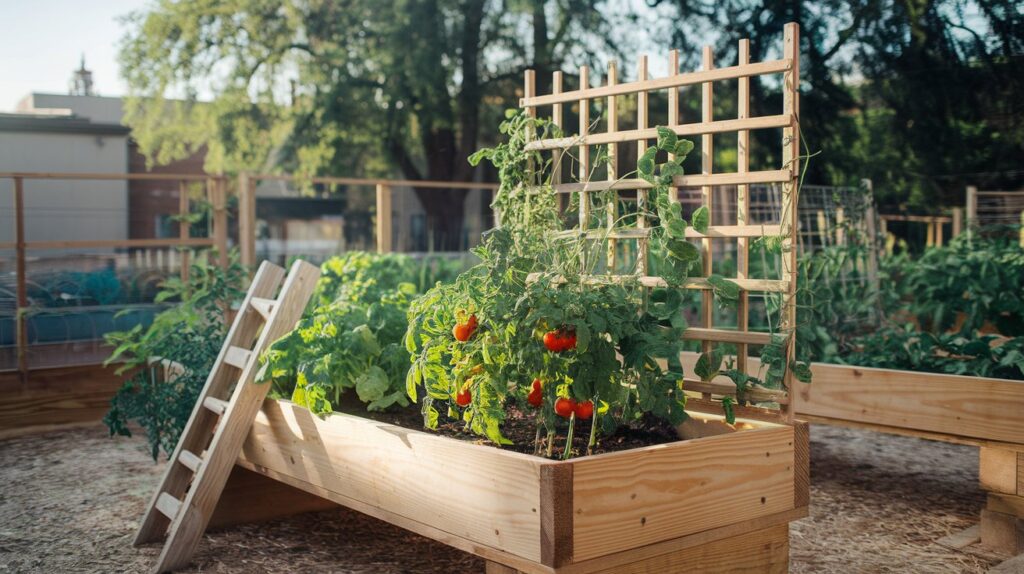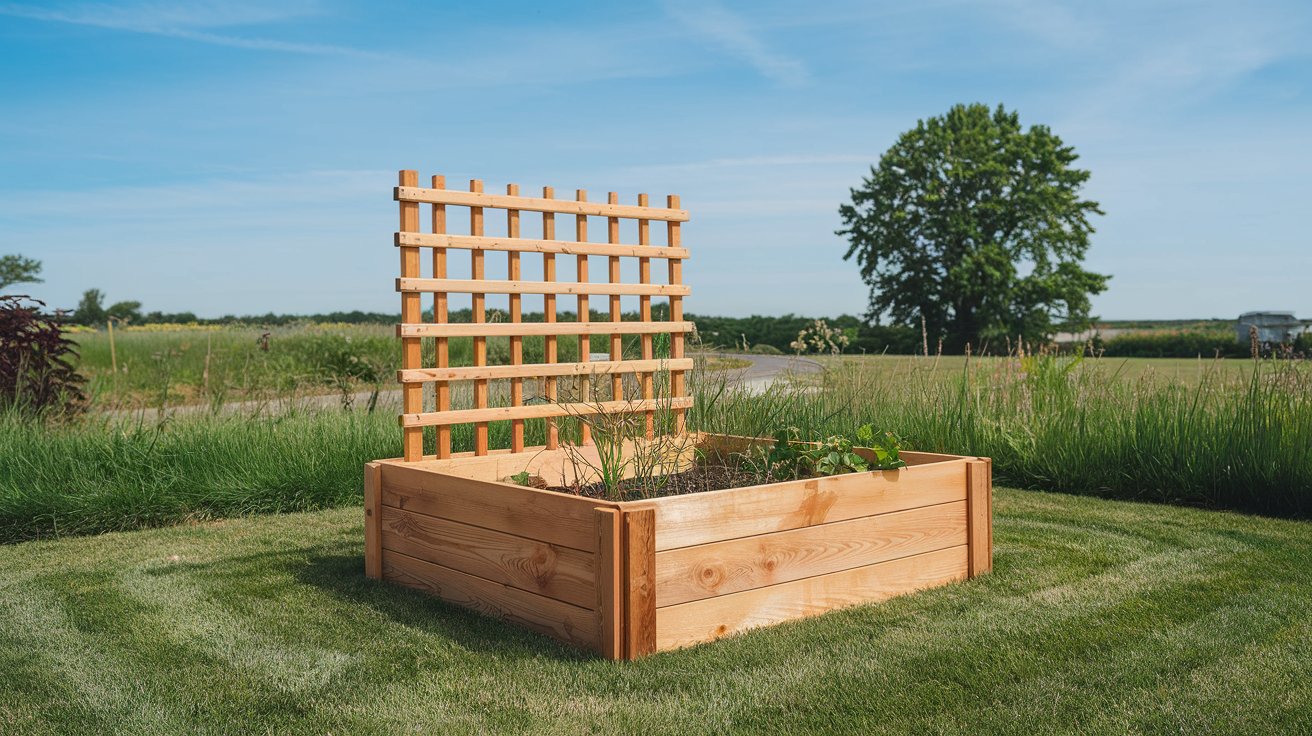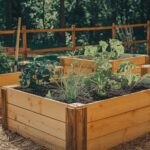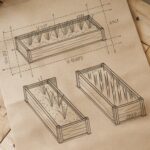Deciding where to place your raised garden bed is one of the most important decisions you’ll make in your gardening journey. The right location can be the difference between a thriving garden and one that struggles to produce. In this article, we’ll walk you through the key factors to consider when choosing the ideal location for your raised bed. Whether you’re building a raised garden beds DIY or purchasing a pre-made kit, these tips will ensure you set your garden up for success.
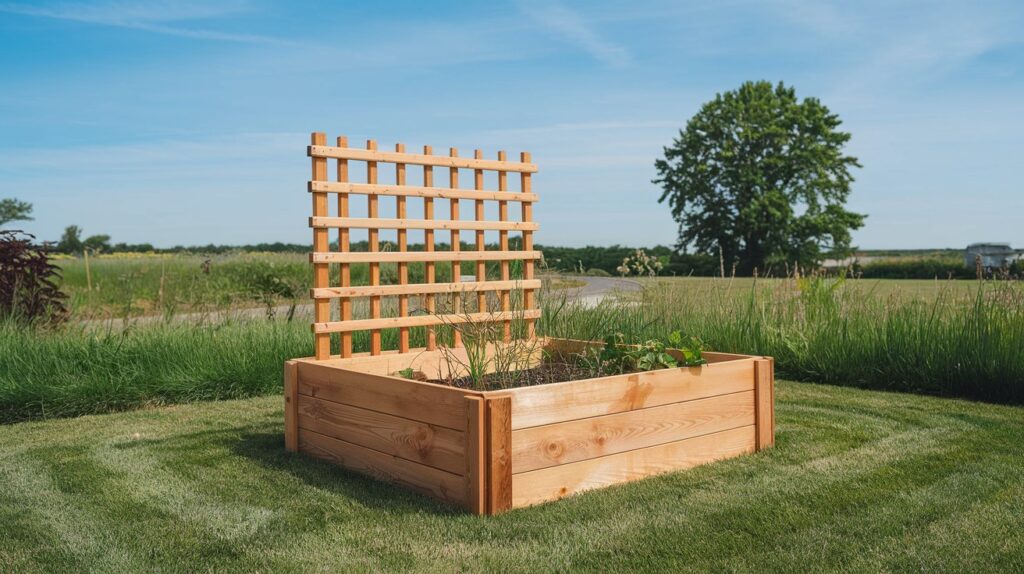
Table of Contents
1. Sunlight: The Most Critical Factor
When it comes to growing vegetables, fruits, and herbs, sunlight is non-negotiable. Most garden plants need at least 6-8 hours of direct sunlight each day to produce healthy yields.
How to Determine the Best Sunlight Spot:
- Observe Your Yard: Spend a few days observing your yard at different times of day. Track where the sun falls in the morning, midday, and late afternoon to identify spots that receive consistent sunlight.
- Test with Sun Patterns: Use a sun calculator or garden app that helps map out sun patterns based on your location. This ensures you understand the available sunlight throughout the year, especially during different growing seasons.
Ideal Plants for Different Light Conditions:
- Full Sun (6-8 hours): Tomatoes, peppers, cucumbers, zucchini, and most herbs.
- Partial Shade (4-6 hours): Lettuce, spinach, radishes, carrots, and kale.
- Full Shade (Less than 4 hours): Ferns, hostas, and certain leafy greens like chard.
For those struggling with sunlight in their garden space, you might consider raised garden bed ideas like moving your bed to a sunnier area or adding reflective surfaces to maximize the light.
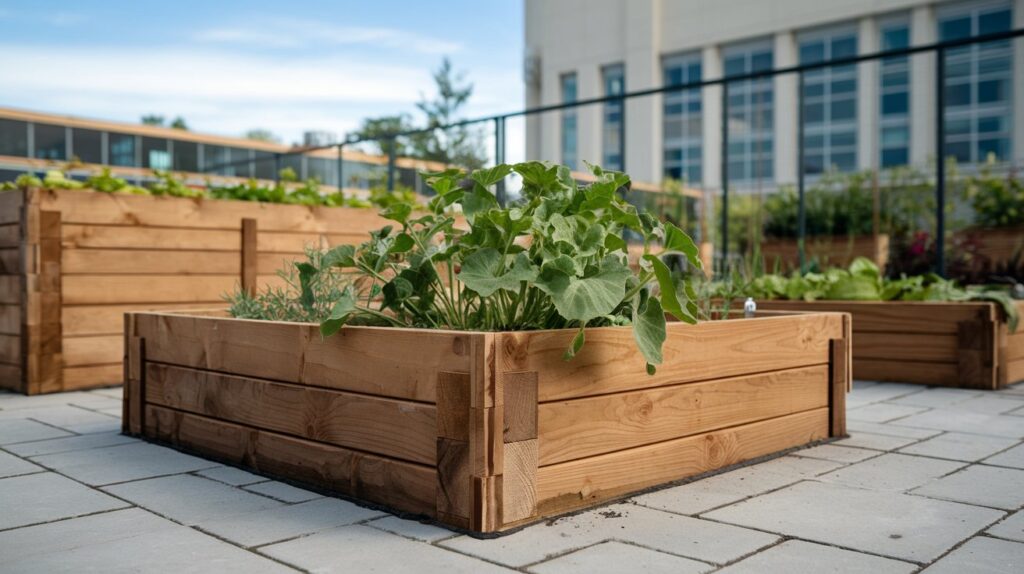
2. Accessibility and Convenience
Gardening should be a joy, not a chore. Placing your raised bed in a location that is easily accessible ensures you’ll tend to your plants more regularly, resulting in a healthier garden.
Key Factors for Accessibility:
- Proximity to Water: Choose a spot that’s close to a water source, such as a hose or rain barrel, so you won’t have to haul water long distances. A well-placed garden bed makes watering easy and ensures your plants get the moisture they need, especially during hot weather.
- Ease of Maintenance: A raised bed that’s close to your home or shed will motivate you to tend to your plants regularly. The more visible and accessible the bed, the more likely you are to take care of weeding, watering, and harvesting tasks.
3. Soil Drainage and Quality
One of the reasons people choose raised beds is to improve soil quality, but even the best soil needs good drainage. While you can control the soil within your raised bed, the ground beneath it still plays an important role in water flow and drainage.
How to Test Soil Drainage:
- Dig a small hole in the spot where you plan to place your raised bed.
- Fill it with water and see how long it takes to drain. Ideally, water should drain away within a few hours.
- Poor Drainage? If water sits in the hole for more than 4 hours, you may need to consider amending the ground with sand or gravel, or raising the height of the bed further.
If your garden bed is located in a low-lying area where water tends to pool after heavy rain, your plants could suffer from root rot. To avoid this, consider placing the bed in a higher area of your yard, or use raised garden bed plans that elevate the bed significantly off the ground.
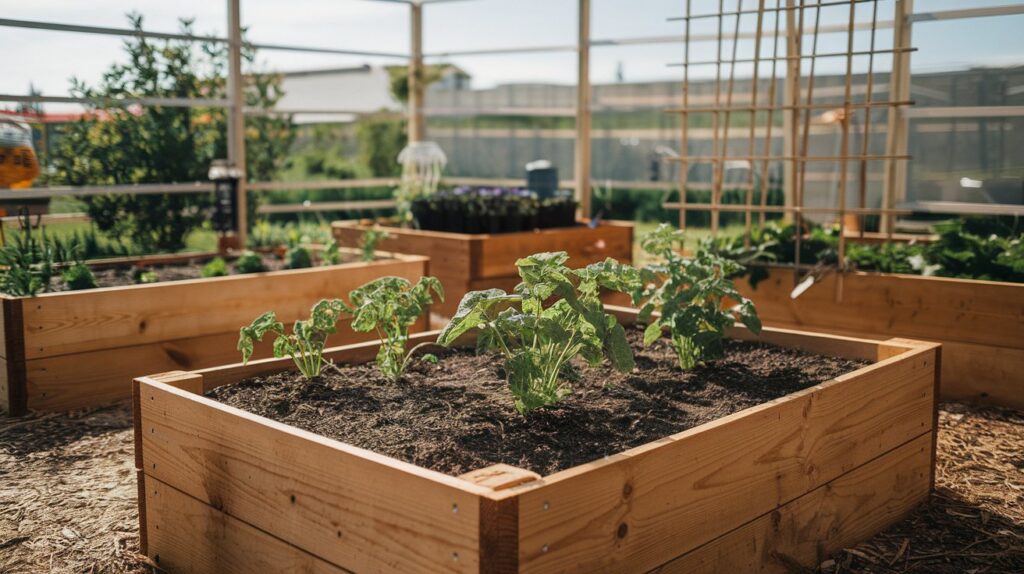
4. Protection from Wind and Harsh Weather
Strong winds can damage delicate plants, dry out soil, and reduce the overall effectiveness of your garden. It’s crucial to find a location that offers some protection from wind, especially if you live in an area prone to high winds.
How to Protect Your Raised Bed from Wind:
- Natural Windbreaks: Look for natural barriers like fences, walls, or dense shrubs that can block strong gusts without casting too much shade.
- Raised Bed Placement: Position your bed on the leeward side (the side sheltered from the wind) of your house or a solid structure like a shed.
- Install Windbreaks: If no natural barriers are available, consider adding a trellis, lattice, or other structure to shield your plants. This also doubles as a climbing support for vine crops like beans or peas.
5. Choosing the Best Microclimate for Your Plants
Your yard likely contains several different microclimates — small areas where the temperature, wind, and moisture levels vary slightly. For example, a spot near a south-facing wall might stay warmer in the spring and fall, while a corner shaded by trees might stay cooler.
Microclimate Considerations:
- Warmer Microclimates: Use these areas for plants that thrive in the heat, such as tomatoes, peppers, and eggplants. These areas are typically near structures like houses or patios, where heat radiates from walls.
- Cooler Microclimates: Use shaded areas for cool-season crops like leafy greens or root vegetables.
By understanding the microclimates in your yard, you can optimize your raised garden bed placement to provide ideal conditions for different crops throughout the year.
6. Level Ground vs. Sloped Ground
Ideally, your raised garden bed should be placed on level ground to ensure even water distribution. If you’re working with a sloped yard, consider using terraced raised beds that step down the slope, allowing each bed to have a flat, even surface.
Building on a Slope:
- Terraced Beds: These beds follow the contour of the slope, allowing you to maximize growing space on uneven terrain.
- Leveling the Ground: If you prefer a single raised bed, you may need to excavate and level the area where you plan to place the bed. Alternatively, building a taller bed on the lower side can help balance the height differences.
7. Consider Raised Bed Mobility
While most raised garden beds are permanent fixtures, some gardeners opt for raised garden beds with legs or even wheels, which allow them to move the bed around the yard. This mobility is particularly useful for renters or those with unpredictable sunlight patterns throughout the seasons.
- Raised Garden Bed with Legs: These beds are elevated above the ground and are perfect for decks, patios, or any location where space is at a premium. Their portability allows you to relocate them easily, ensuring your plants get the best growing conditions all year round.
Conclusion: Strategic Placement Equals Success
Choosing the right location for your raised garden bed involves more than just finding an empty space. By considering factors like sunlight, accessibility, soil quality, drainage, and protection from the elements, you’ll set your garden up for long-term success.
When planning your raised garden bed DIY project or shopping for pre-made kits, always think about how the placement will affect your plants. An ideal location can make all the difference, ensuring your garden thrives and produces bountiful harvests year after year.
